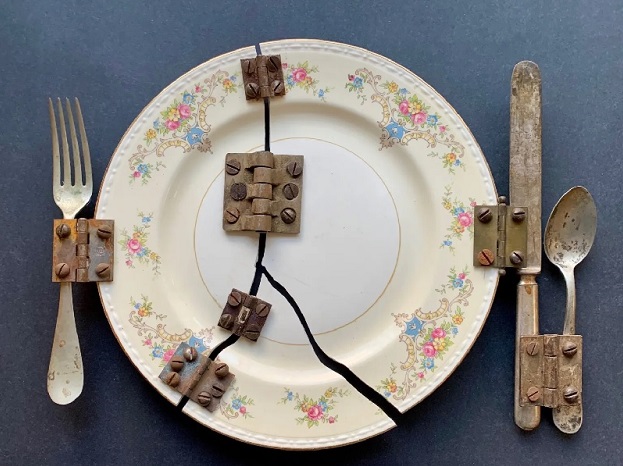Kintsugi is a Japanese way of repairing wounds in ceramics or pottery. As a philosophy, Japanese belief brings back beauty from the broken; experts use lacquer dusted or mixed with powdered gold, silver or platinum to do this. The Kintsugi technique aims to bring damaged things back to life and use; it’s the art of repairing found in antiquity. This technique is a mix of Japanese crafts, philosophy and aesthetics.
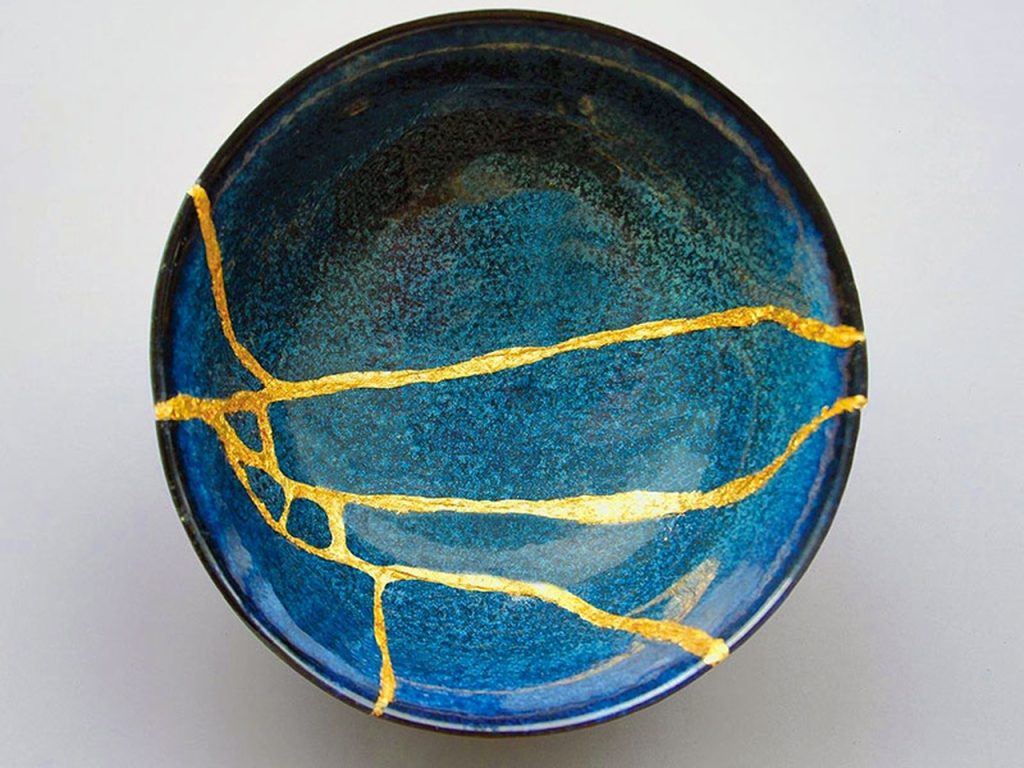
The art of Kintsugi is enduring to contemporary Japanese life, and aesthetics as a philosophic form evolved gradually. Historically, this technique is a part of Japanese tea culture, and repairing damaged things is considered an art practice. The earliest evidence of Kintsugi repair is from the seventeenth century, the early Edo period, and believed it has developed since the Azuchi Momoyama period in the late sixteenth century. This traditional Japanese technique reached the Western world, and many artists from Europe and America were impressively fond of this art of repairing. Glen Martin Taylor is a self-taught ceramic artist living in Ohio, USA, who uses this Kintsugi technique to create unique ceramic artwork; he is one of those who is fond of the antique Japanese process.
Boundary-breaking Ceramicist
Glen Martin Taylor brilliantly incorporates this technique with different media like the kitchen and other materials usually used daily, bringing them together into a momentous or purposeless world. The materials used by Glen are nails, scissors, hinges, iron wire, bones, screws, knives, bells, buttons, threads, crystals, metals door locks, wood, leather, chains, metal plates, fabrics, shoes, paper, beach stones, spools, jute, hammer, gloves, rope, hemp and so on to creates a formless form with broken ceramics.
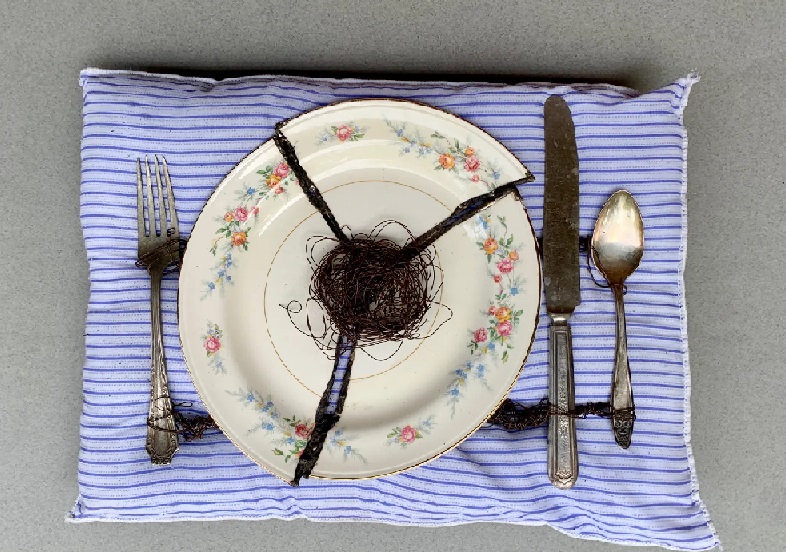
When we go through Glen’s art practice occasionally, we understand what things in our daily life are and how we repair our life patterns through art practice. Glen Martin Taylor does not just bring multi-material life into the practice of art making; he used to articulate each work with a heading. Bowls of coloured pencil is a work combined with ceramics and pencils, and it tells a story of materials and unknown elements. We may not be completely aware of the purpose and utility of the materials we use daily. When we merge those things in the podium of ‘Art’, that carries the strange elements of subjectivity.
Glen Martin uses Kintsugi in an entirely American way, with words that have no association with Kintsugi tradition and philosophy. Glen puts the philosophy of repairing into a modern (?) and capitalist society, which uses all these things together and individually without awareness. In Japanese culture, nothing is abandoned; they reuse and repair something that belongs to them. For them, Kintsugi is a complete art without blending with anything. Glen changed the Kintsugi method, using nails, wire, or something else to restore instead of lacquer dusted or mixed with powdered gold.
Disturbing Crockery
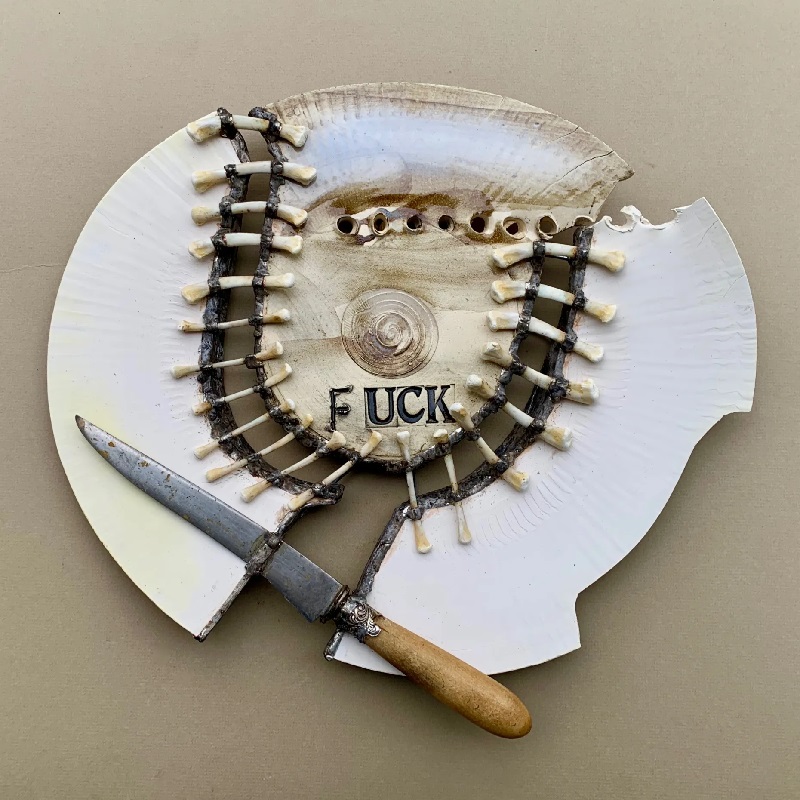
Glen uses this technique to reinvent the idea of Kintsugi to remake a deficiency, damage or wound into a more beautiful and flawless one. Perfection is not a marker but a hidden trash element in contemporary culture. Glen uses the Eastern philosophy of ‘repair’ to heal the Western capitalist use and throw lifestyle; the merging point is precise with entirely different materials. For Glen, these objects are not for usage but to resonate with the materiality of life and the significance of things in human culture. Those objects come into daily life when they use Gold or Silver to repair. That is a story and philosophy of the East. When Glen uses that philosophy instead of technique, the American material usage comeback to the audience, not their daily life. The value is higher after the repair of things with gold and silver in Japanese culture.
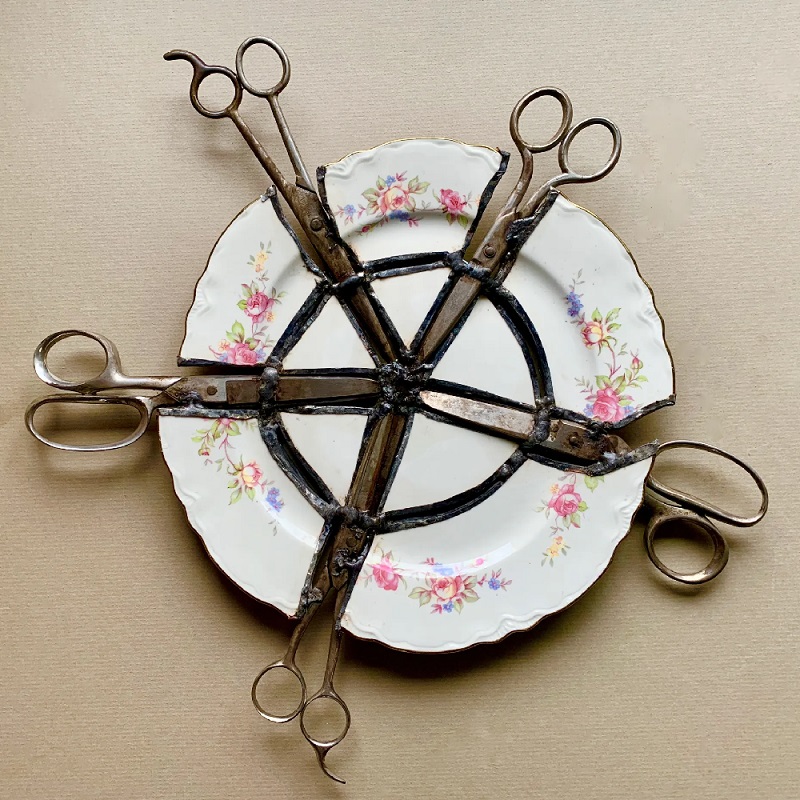
Glen’s work’s uniqueness is beautiful Japanese craftsmanship merging with American art practice and fusing two distinct ideas of West and East. It’s a fusion of West and East, two techniques or two life patterns, or even a capitalist and philosophical way of life. According to philosophy, you don’t need to hide your scars but recognise them as an essential part of your life; that makes you stronger than ever. If you are wounded and healed, the spots remain; that reminds you and others about the wounds of memory.

Krispin Joseph PX, a poet and journalist, completed an MFA in art history and visual studies at the University of Hyderabad.


